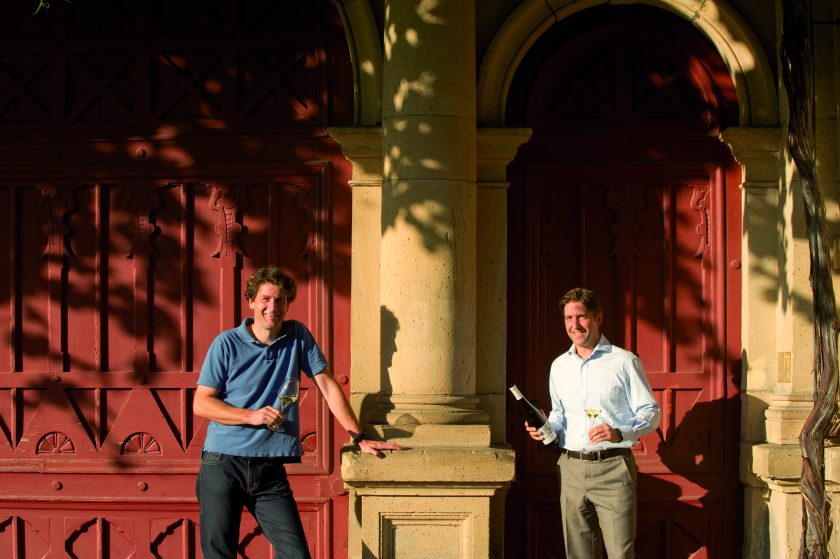Müller-Catoir
Weingut Müller-Catoir (25 hectares)
Haardt / Pfalz / Germany
Family-owned since 1774, Müller-Catoir is now owned by Philipp David Catoir, the 9thgeneration. Philipp David works alongside Martin Franzen, who is responsible for both vineyards and cellar. Martin originally comes from the Mosel, bringing experience as head of operations at Schlossgut Diel in the Nahe and at Gut Nagelsforst in Baden. Franzen joined the winery in 2002, taking over from legendary winemaker Hans-Günther Schwarz, who made Catoir a household name in Germany and abroad. Hans-Günther had a reputation as a great and friendly mentor to two generations of some of the best winemakers in Germany, Austria, and Alsace. Martin has continued this tradition and has become one of the most respected winemakers in Germany.
This is also one of the most beautiful wineries in Germany: a sandstone manor house, built in the 1890s, into the hillside in the village of Haardt. The beautiful estate overlooks some of the very finest vineyards in the Pfalz, in the villages of Haardt, Gimmeldingen, Mussbach and now Neustadt, where Catoir has started a new project in 2018, focusing on Pinot Noir, a variety that Martin feels will play a more important role as weather patterns change. Riesling is the main focus at Catoir and in the ripe vintages of the last decade, excellent dry wines as well as traditional prädikatswein are produced from excellent vineyard sites, including the monopole site Bürgergarten “Im Breumel”, a protected clos and Grosse Lage (Grand Cru) site inside of the Haardter Bürgergarten Erste Lage (Premier Cru). In addition to Riesling, Franzen has a deft hand with aromatic varieties. Often a range of estate quality, village level, and Erste Lagen Scheurebe and Muskateller are produced here; they are the finest examples of these varieties produced anywhere. Rieslaner is also a specialty here, and Martin makes outstanding sweet wines from this rare variety.
This area of the Pfalz is quiet and feels far away from the lively tourist town of Deidesheim. A majority of the holdings of the estate are on the hillsides, the most prized sections of vineyards sloping south and east. The diversity of soils are the basis for the different bottlings and single vineyards here, which range from red to yellow sandstone, loess and loam to shell limestone and gravel. The geologic diversity along with the variation of vineyard elevation and steepness allows for multiple styles to be produced at the highest level.
To show most clearly the differences between sites and different levels of quality, Müller-Catoir adopted a more holistic philosophy in the vineyards, beginning organic conversion in 2012 and completed their first certified organic vintage in 2015. When asked about the difference that he feels organic viticulture has made, Martin says that he finds the wines have “a deeper saltiness, a more mineral element, and more complexity”. In the cellar, the approach is generally very hands-off, but the treatment of the fruit changes slightly vintage, by vintage. Minimal handling, spontaneous fermentations, mostly in stainless steel and long contact with the lees are the hallmarks of the style at this address. Every wine produced here is 100% estate grown and the treatment of each vineyard is the same, regardless of hierarchy.
- Annual production: 13,000 cases
- Founded In: 1744
- Vineyard holdings:
- Haardt – Bürgergarten, Herzog: Grand Crus, both sandstone
- Haardt Herrenletten: Grand Cru, Loam, limestone
- Gimmeldingen Mandelgarten: Grand Cru, Weathered sandstone and löss
- Mußbach Eselshaut: Gravel
- Grape Varieties: Riesling, Pinot Blanc, Pinot Gris, Pinot Noir, Scheurebe, Muskateller, Sauvignon Blanc, Rieslaner




